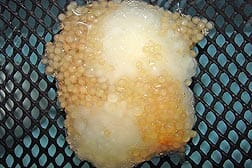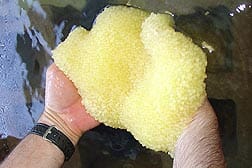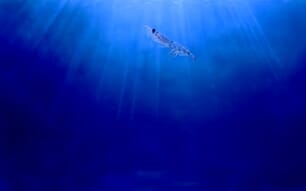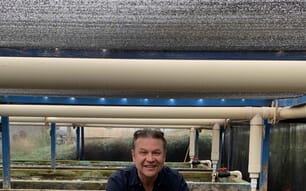A product used as a disinfectant in agriculture, food preparation, and medical facilities also kills a fungus that causes the disease saprolegniasis on catfish eggs, and it has the potential to treat harmful parasites.
At the Agricultural Research Service’s Harry K. Dupree Stuttgart [Arkansas] National Aquaculture Research Center, toxicologist David Straus and his colleagues took a close look at the use of peracetic acid—a stabilised mixture of acetic acid (concentrated vinegar) and hydrogen peroxide—for treating catfish eggs. They first determined how much peracetic acid was toxic to hatching catfish fry.
The toxicity study indicated that a safe treatment rate was 2.2 parts per million (ppm) peracetic acid for 2-day-old yolk-sac fry and 1.3 ppm for 7-day-old swim-up fry.
“The advantage of using peracetic acid is that it does not produce any residues that would harm fry or the environment,” Mr Straus said.
“It is safe and effective to use on fish at a low dose, breaks down rapidly into harmless residues, and does not leave an environmental footprint like other chemicals.”
Peracetic acid is approved by the US Environmental Protection Agency for many uses in the United States, including disinfecting wastewater and sterilizing items for the food industry and hospitals. It is not approved for aquaculture use in the United States, but it is in Europe.

“In Europe, the compound is considered a safe and effective replacement for banned chemicals and antibiotics,” Mr Straus added.
“My colleagues in Germany and Denmark are using it to control fungus on adult fish, and we have also found it very effective for certain parasites,” Mr Straus said.
“We are working together on acute toxicity studies in different species of fish, because this information is lacking. You need to know how safe it is for fish before you can treat them.”
In a separate study, Mr Straus looked at the effectiveness of different concentrations of peracetic acid in killing fungus on eggs. His experiments included five peracetic acid concentrations (2.5, 5, 10, 15, and 20 ppm) and an untreated control in a flow-through system.
Eggs were treated twice daily until the embryos developed eyes. Hatching was complete in nine days and the fry were counted to determine the survival rate in each treatment.
Fungal growth was severe in the controls, resulting in 11 per cent survival compared to 60 per cent in the 2.5-ppm group. Very little fungus was present in treatments of 2.5 ppm or higher. However, treatments of 15 and 20 ppm were toxic to eggs.

“Although the highest survival rate of hatched fry was at 5 ppm, we found 2.5 ppm to be a safe treatment,” Mr Straus said. “This rate is very low, and peracetic acid is flushed out of the troughs quickly.”
Fungal infections such as saprolegniasis in hatchery-reared catfish eggs can cause serious losses of young fish, Straus says. This research provides significant information that could help aquaculture producers deal with fungus problems on eggs.
Why not read:




